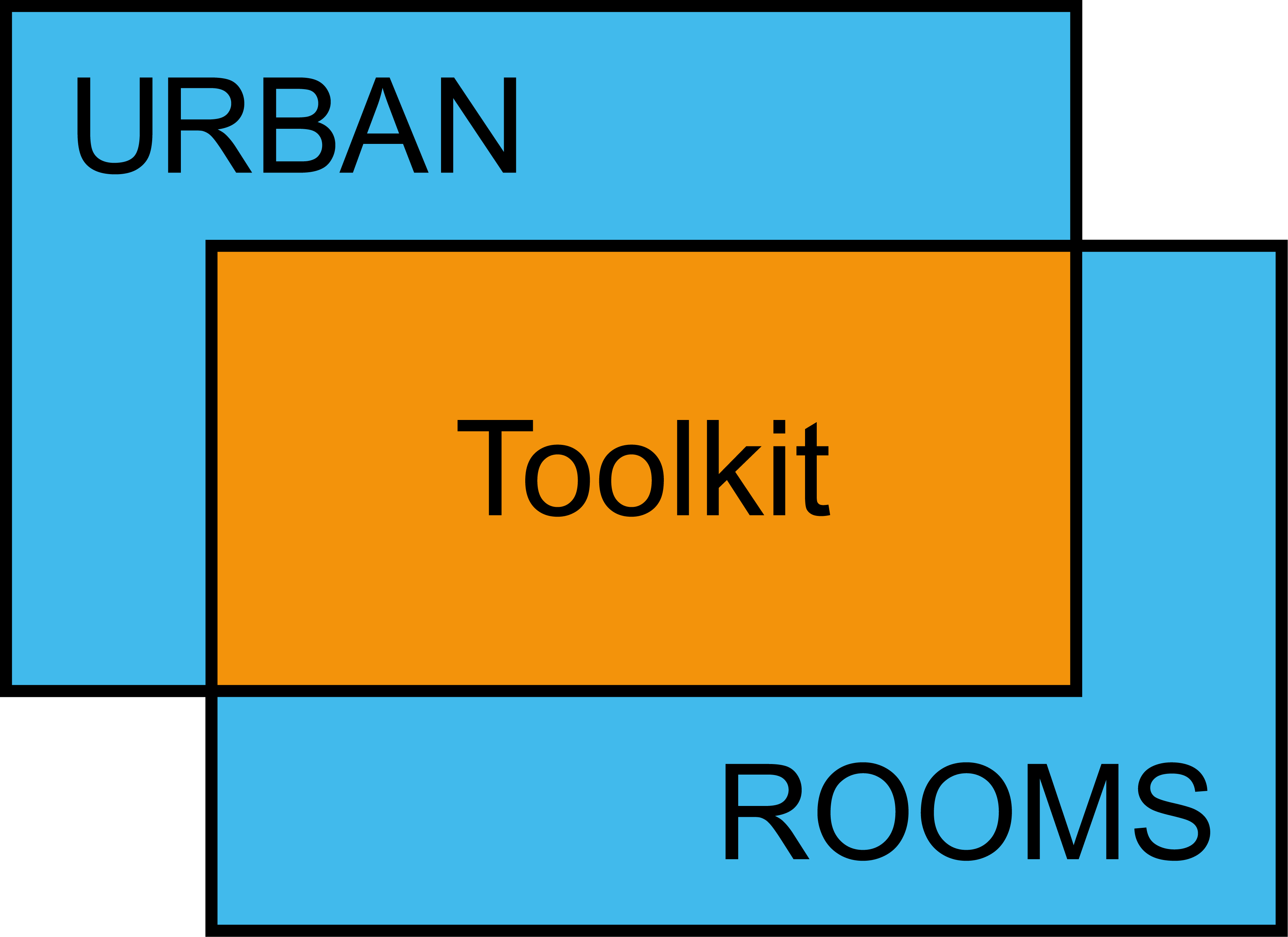


What's Next?
How can we create a legacy for the UR?
Beyond understanding the impact that each Urban Room has had directly on their local place and the people who have taken part
in the project, we should strive to develop and sustain a growing infrastructure of place-based creative community engagement - through follow-on Urban Rooms or related initiatives and programmes.
Long-term transformation of placemaking through community participation takes time and sustained effort. The movement is still in its infancy and although interest is growing rapidly, with many Urban Rooms proposed across the UK, the systemic transformation of the practice and policy of placemaking towards greater democracy and inclusion that the Urban Room methodology advocates for is a long- term goal. It is therefore important to not think about your Urban Room in isolation, but as part of a distributed network of Urban Rooms across the UK, each helping through their legacy to strengthen community engagement in placemaking.
Ideas of how to strengthen the legacy of your Urban Room:
join the Urban Rooms Network! - we will help you disseminate your UR, share knowhow and connect with groups across different sectors, scales and localities to support you in your engagement work
through your UR identify and support individuals and groups in the community who can continue to engage local people in placemaking either when the UR has closed, or by taking on the running of the UR - is it possible for your organisation to continue to fund this person or group to do this? Perhaps you can take on an advisory role while they take on greater responsibility of the day to day running of the UR?
URs are excellent tools to make connections between neighbourhoods, towns and cities and to reveal the interdependence of systems such as food, transport, services, materials and knowledge. They are also useful in helping to place local issues within a bigger picture - making sense of how regional and national systems, policies and structures manifest at a local scale. Making the most of these connections and interdependencies can help to enhance the impact of the UR’s findings and sustain its legacy
can the fittings, props, displays etc of the UR be hosted and exhibited elsewhere in the area once the UR has closed? In a Town Hall, library, public space, etc?
can your engagement props be designed so they can be demounted and reused elsewhere so that they have an afterlife?
through the life of the UR, make as many connections with policy- makers and community leaders as possible in order to open up avenues of communication between the UR, the community and local decision-makers that can persist even after the UR closes
share your good work - be as transparent as possible in sharing the process and outcomes of the UR for others to learn from and possibly implement in their place

Ruthin Futures
What's Next?
How can we create a legacy for the UR?
Beyond understanding the impact that each Urban Room has had directly on their local place and the people who have taken part
in the project, we should strive to develop and sustain a growing infrastructure of place-based creative community engagement - through follow-on Urban Rooms or related initiatives and programmes.
Long-term transformation of placemaking through community participation takes time and sustained effort. The movement is still in its infancy and although interest is growing rapidly, with many Urban Rooms proposed across the UK, the systemic transformation of the practice and policy of placemaking towards greater democracy and inclusion that the Urban Room methodology advocates for is a long- term goal. It is therefore important to not think about your Urban Room in isolation, but as part of a distributed network of Urban Rooms across the UK, each helping through their legacy to strengthen community engagement in placemaking.
Ideas of how to strengthen the legacy of your Urban Room:
join the Urban Rooms Network! - we will help you disseminate your UR, share knowhow and connect with groups across different sectors, scales and localities to support you in your engagement work
through your UR identify and support individuals and groups in the community who can continue to engage local people in placemaking either when the UR has closed, or by taking on the running of the UR - is it possible for your organisation to continue to fund this person or group to do this? Perhaps you can take on an advisory role while they take on greater responsibility of the day to day running of the UR?
URs are excellent tools to make connections between neighbourhoods, towns and cities and to reveal the interdependence of systems such as food, transport, services, materials and knowledge. They are also useful in helping to place local issues within a bigger picture - making sense of how regional and national systems, policies and structures manifest at a local scale. Making the most of these connections and interdependencies can help to enhance the impact of the UR’s findings and sustain its legacy
can the fittings, props, displays etc of the UR be hosted and exhibited elsewhere in the area once the UR has closed? In a Town Hall, library, public space, etc?
can your engagement props be designed so they can be demounted and reused elsewhere so that they have an afterlife?
through the life of the UR, make as many connections with policy- makers and community leaders as possible in order to open up avenues of communication between the UR, the community and local decision-makers that can persist even after the UR closes
share your good work - be as transparent as possible in sharing the process and outcomes of the UR for others to learn from and possibly implement in their place

Ruthin Futures
